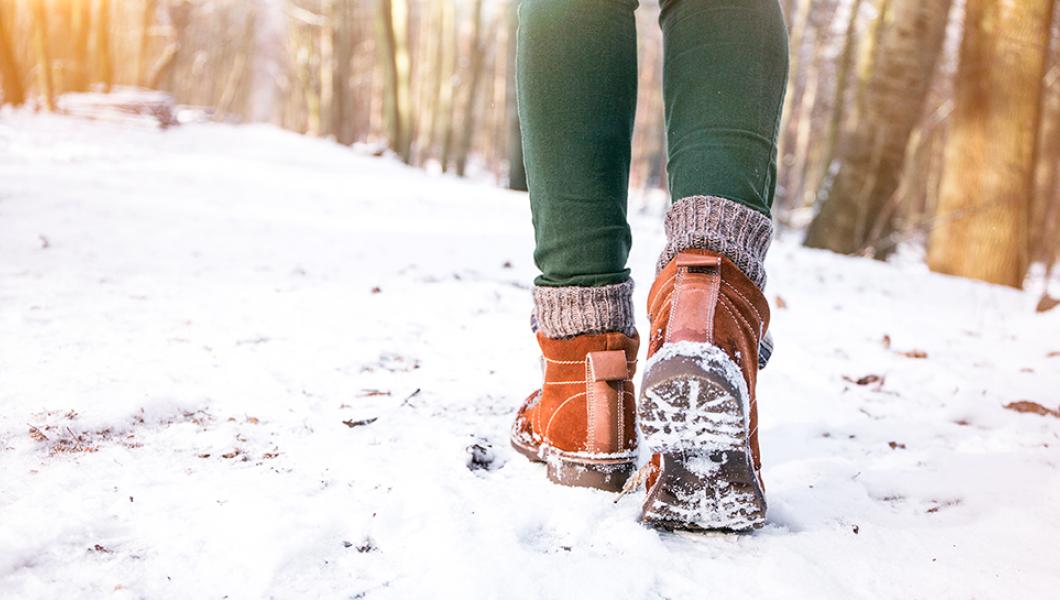Whether you love playing in the snow, or prefer to stay cozy indoors, one thing’s for sure—winter storms and cold temperatures can be hazardous. Here are tips for staying warm and dry, reducing the risk of slipping on ice, and other precautions. With a little knowledge and advanced planning, you’ll stay safe and healthy all winter long.
Bundle up!
When temps drop, it’s critical to wear appropriate outdoor clothing to protect against hypothermia (abnormally low body temperature) and frostbite. Staying dry is equally important—wet clothing chills the body quickly.
Several layers of loose-fitting clothing will help you retain heat by trapping air close to your body. Opt for mittens (warmer than gloves) and be sure your coat and boots are water-resistant. Don’t forget a hat, and something to cover your face and mouth, such as a scarf or knit mask.
Prevent slips and falls
Ice-covered sidewalks, steps, and driveways are a common cause of many winter-related injuries. While walking on ice is extremely dangerous, it’s sometimes unavoidable. Here are tips for staying upright.
- Walk like a penguin. When we’re walking normally, our legs’ ability to support our weight is split mid-stride. On ice, this way of walking puts us at risk of slipping and falling. To reduce that risk, keep your center of gravity over your front leg and take smaller, shorter steps. You may feel a little silly as you waddle, but try it. Penguins, after all, know how to hold their own on ice.
- To provide traction, sprinkle cat litter or sand on icy patches around your home. Or use rock salt or another chemical de-icing compound.
- Before getting out of your vehicle, do a safety test: run your foot across the pavement to gauge how slick it is. Stabilize yourself by holding onto your car and take your time getting out, then step down, not out.
- Wear appropriate footwear, such as boots with good traction.
- Don’t be distracted when walking. Keep your cell phone in your pocket!
Additional precautions
- Don’t overdo it. Cold weather puts an extra strain on the heart. If you have to do heavy outdoor chores, dress warmly and work slowly.
- When participating in outdoor recreation, take a buddy and an emergency kit.
- Carry a cell phone and be sure it’s fully charged before leaving home.
- Bring pets inside if you can. If they must remain outdoors, provide adequate shelter and unfrozen water to drink.
- Prepare your home for cold weather emergencies, including power outages. Have an up-to-date emergency kit and at least a three-day supply of nonperishable food and clean water (one gallon per person/pet per day). Visit CDC.gov/disasters/foodwater/prepare.html for more information.
- Avoid nonessential travel when the National Weather Service has issued advisories. If you must travel, inform a friend or relative of your route and ETA.
- Put together an emergency kit for your car. AAA has a helpful list of items to include: AAA.com/autorepair/articles/what-to-have-in-your-car-emergency-kit
Finally, getting through winter safely is a whole lot easier if we look out for one another. Check on family and neighbors, especially older adults and those with health conditions who may be at higher risk during cold weather.
